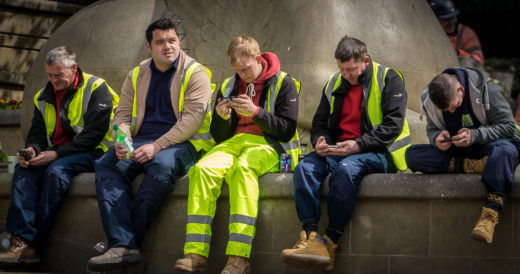Communication breakdown
I often marvel at the fact that I now live in a science fiction world. At least, a lot of things that are now everyday occurrences would have seemed very futuristic just a few years ago. This phenomenon is manifest wherever I look. Just staring at the screen, as I write this text, is an obvious example. But communication is the most amazing area of advancement. With a little box in my pocket, I can talk to just about anyone on the planet, [almost] regardless of where I and they are located. This is straight out of Star Trek.
So, with all this technology, communication should be smoother and just generally better nowadays. But that is not the whole story …
In the distant past, it was simple. If you wished to communicate something to someone, you went to them and spoke with them [or delegated the job to someone else]. Then with the advent of mail services for everyone, writing a letter was an option. Then there was the phone and telegrams and, latterly, fax. These options served us well, but the Internet and other modern technology have increased our options enormously.
With such a wide choice, people tend to select the wrong communications medium. They might phone [and interrupt someone] to convey a simple, non-urgent piece of information, when email would be better. Or they might try to chat via email, when a messaging service or phone or even face-to-face might be much better. It is a question of choosing the right tool for the job. But, even with some thought, it can still go wrong.
My wife, Libby, and I obviously communicate in person and we sometimes talk on the phone. We also use a number of other services: email, text messaging, Facebook Messenger and WhatsApp. Between one another, we tend to eschew all the other options: Twitter, LinkedIn, Instagram, SnapChat, Skype, FaceTime, iMessage, the list goes on …
A big challenge is that, even with careful thought about using these technologies, we sometimes fail to communicate. A few days ago, Libby told me that she had sent me the details of a venue. I asked which medium she had used to send this information and she could not remember. It was less trouble for her to send it again than for me to trawl through the four options. If we had used other services too, the searching time would escalate. It gets even worse when one of these services fails. Yesterday, for example, Libby was going to be a little late home from work and she sent me a message via WhatsApp. I received the message, but there was no notification on my phone. It does seem slightly hit and miss. I also observe that WhatsApp notifications do not comply with Apple’s iOS 10 standards, which can make them annoying. [Not marked as “read” if the notification is opened directly.]
I have a feeling of déjà vu. Going back 10+ years, many people, that I know, found that a very quick alternative to email was available via various messenger services. Yahoo IM, Microsoft’s MSN and a slew of others were freely available. They worked well [on Windows], but we were challenged by the number of options. Running 3 or more messaging apps seemed a little cumbersome. The solution appeared in the form of apps that consolidated several messaging services in a single window.
Somehow, none of these messaging services seemed to survive the transition to a world of smart phones and tablets. They were replaced by the likes of WhatsApp. Oddly, these newer, fashionable services offer almost nothing that the 10+ year old messaging services did not provide. I guess that is progress. However, we have the problem of the multiplicity, as I described earlier. What is needed is a new app/service that can consolidate all the social networking streams into one place. To me, this just sounds like a coding challenge.
Anyone who has read The Circle or seen the movie will know that such a consolidation might have “unforeseen consequences” …
